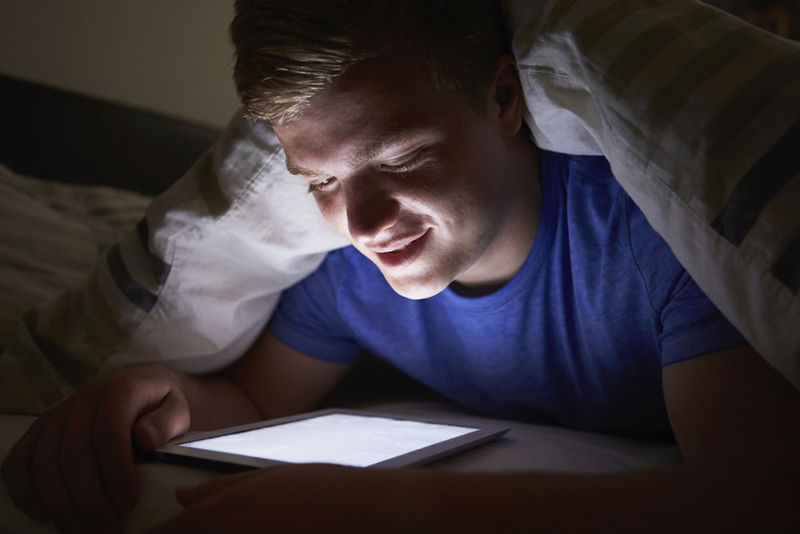The pervasive glow of electronic devices may be an impediment to a good night’s sleep. As lamps switch off in teens’ bedrooms across America, the lights from their computer screens, smartphones and tablets often stay on throughout the night. These devices emit light of all colors, but it’s the blues in particular that pose a danger to sleep.
Blue light is emitted by most of our electronic devices, including television monitors and newer energy-efficient light bulbs. Amount of exposure only increases with age.
Unfortunately, blue light is the highest energy wavelength of visible light, which also makes it the most harmful to the eye and recent studies have shown it to have a significantly negative impact on our sleep patterns.
Blue light has been shown to alter our natural circadian rhythm, or ‘biological clock’ in that it stimulates and increase alertness. Because of this, using electronic devices before bedtime can delay deep REM sleep significantly. This may in part be due to strong suppressing effect that blue light has on melatonin levels, which are important for proper circadian rhythms. Melatonin supplementation is commonly used as a treatment for sleep disorders and we know that sleep is vital to our adult bodies.
Pediatricians however stress the importance of sleep in children and teens and is critical for proper neurologic development and prevention of many learning and behavioral problems. The energy produced by blue light is powerful enough to penetrate the deepest layers of the eye, including the retina, and can increase our long-term risk of macular degeneration.
It is important that we protect our eyes from the potential harmful effects associated with blue light emission, especially in children and teens, by limiting exposure time to digital devices especially before bedtime. Laboratories have recently developed ‘blue blocking’ lens coatings for glasses which can eliminate up to 20% of the harmful blue light. The coatings also provide full UV protection, while maintaining clarity of vision and normal color discrimination. We suggest that you discuss these lens coatings with your eye doctor or call our office to schedule an exam.
For more info go to: Stokolvision.com
By Dr. Arnold M. Stokol and Dr. Andreane Fagala | Special Contributors
Dr. Arnold Stokol is a Diplomate of the American Board of Optometry, a member of the Texas Optometric Association and the American Optometric Association. He is a past president of the North Texas Optometry Society.
Dr. Andreane Fagala is a therapeutic optometric and has special interest in pediatric optometry, diabetes management, and specialty scleral contact lenses.




